Amazon.com, Inc. (AMZN) on Q1 2021 Results - Earnings Call Transcript
Operator: Thank you for standing by. Good day, everyone, and welcome to the Amazon.com Q1 2021 Financial Results Teleconference. At this time, all participants are in a listen-only mode. After the presentation, we will conduct a question-and-answer session. Today's call is being recorded. For opening remarks, I will be turning the call over to Director of Investor Relations, Mr. Dave Fildes. Please go ahead. Dave Fildes: Hello, and welcome to our Q1 2021 financial results conference call. Joining us today to answer your questions is Brian Olsavsky, our CFO. Brian Olsavsky: Thank you for joining us today. Before we get to Q&A, I will touch upon a few highlights from the first quarter of the year. Let me start by highlighting the momentum we are seeing in AWS. In the first quarter, AWS revenue growth accelerated across a broad range of customers. During COVID, we've seen many enterprises decide that they no longer want to manage their own technology infrastructure. They see that partnering with AWS and moving to the cloud gives them better cost, better capability and better speed of innovation. We expect this trend to continue as we move into the post-pandemic recovery. There's significant momentum around the world, including broad and deep engagement across major industries. For example, last quarter, we announced new commitments and migrations from some of the world's most renowned sports leagues, the National Hockey League, the PGA Tour, Formula 1 and the German Bundesliga. We continue to expand our AWS infrastructure footprint to support the strong growth we're seeing. AWS offers 80 availability zones across 25 geographic regions around the world. And we've announced plans to launch 15 more availability zones in five more regions. Turning to the consumer business, we continue to see strong customer demand globally in the first quarter. Revenue growth in our international segment grew 50% on an FX-neutral basis year-over-year in Q1 as restrictive regional and national lockdowns were in place throughout the quarter, particularly in the UK and Europe. In North America, revenue growth of 39%, largely reflects the continuation of demand trends that we have seen since the early months of the pandemic. Third-party sellers were largely comprised of small- and medium-sized businesses, continue to see strong sales and serve more customers. Our 3P seller services revenue increased 60% on an FX-neutral basis year-over-year in the first quarter, growing significantly faster than online stores revenue. Third-party units represented 55% of our total paid units in Q1, up from 52% in Q1 of last year. Prime members also continue to shop with greater frequency and across more categories than before the pandemic. These trends have also extended to Prime's digital benefits. Over the past 12 months, Prime Video streaming hours were up over 70% year-over-year. Amazon Studio had its best award season yet, and Prime members can look forward to a strong slate of upcoming original series and films featuring an impressive group of diverse talent and creators. We're also continuing to expand our roster of live sports content, and we're excited to partner with the NFL and be the exclusive home of NFL Thursday Night Football into the next decade. Operator: Thank you. At this time, we will now open the call up for questions. . Thank you. Our first question is coming from Ross Sandler with Barclays. Please proceed with your question. Ross Sandler: Great. Thanks, Brian. A question on last-mile delivery. So you guys are investing pretty aggressively to build out that Amazon control last-mile fulfillment. We see the blue vans driving around everywhere in the Bay Area, so congrats on that. So I guess the question is, how long until you feel like if that's in the right place as far as all your major metros where you want to set that up. And at what stage, does the unit cost of shipping start to improve from these initiatives? And I guess, high level, is controlling the last mile allowing you to further penetrate or gain market share in certain categories where speedy delivery is of the essence. Can you talk about that, please? Thank you. Brian Olsavsky: Ross, thanks for your questions. Yes, let me start with last mile in general. So we're investing heavily. We talked about it last year, our fulfillment, including Amazon Logistics investment, we increased our capacity by 50%. And you can see from our CapEx numbers, the CapEx, including infrastructure, of course, increased to 80% in the trailing 12 months over the prior trailing 12 months. So certainly, a large area of investment, not only fulfillment centers, but also two elements of transportation, what we call the middle mile where we're putting sort centers, Amazon Air, line haul, trailers, think of all the intermediate movements between our warehouses and our final delivery stations. And then that last mile was just delivery stations, DSP and seeing our delivery service partners as well. So you talked about costs. We actually think our cost right now is very competitive with our external options, and we measure that very closely. It certainly gets better with demand and amortization and route density, et cetera. But we see, which is very helpful, is the ability to control the whole flow of products from the warehouse to the end customer. Its churn would -- normally was a batch process where we would hand off a large batch of orders to a third-party once a day, let's say, to a continuous flow process, where we continually have orders leaving our warehouses five, six times a day going through middle mile and then to final delivery, either through our AMZL drivers or DSP partners. So that gives us a lot of ability not only to control the flow of the product, but also flow of information. We're seeing a lot of progress in that area. And I think you'll see it, too, as a customer where you're starting to get more precise estimates of delivery. You'll get notes that say, hey, you're eight stops away from your delivery, et cetera. Because everyone's busy. A big part of delivery is actually being there sometimes when you need to get -- be there for the delivery. Other times, Of course, you can just have it put on your doorstep and get to it later. Dave Fildes: This is David, Ross. Just to add to that, Ryan touched upon it, but there are an important part of this last-mile effort has been the program we've had, the -- Brian called this -- mentioned the delivery services partner program, or the DSP, it's an important part of the last-mile network. And that -- just as a reminder, that employs more than 100,000 drivers, and it's been growing for the past few years. And it's really -- it's a program with an incentive for those folks to become small business owners and start their own package delivery business. So it's a great way for those folks to access the delivery technology and the package volumes we have and tapping on the network. And we've got a lot of really cool elements as part of that program, grant programs to support entrepreneurs and minority groups and really help them build out and helps us support a diverse business community as well. Operator: Your next question comes from the line of Brent Thill with Jefferies. Please proceed with your question. Brent Thill: Good afternoon. On AWS, I'm curious if you could give us a backlog number. And there have been a lot of questions about the incredible backlog strength you've seen in the last several quarters, and it finally seems that you're seeing the conversions between that backlog growth and now revenue growth accelerating. If you could just comment a little more on that conversion and how you expect it to trend? Thank you. Dave Fildes: Yes, hey Brent, it's Dave. I think it's -- the backlog growth, just to give you the figures for March 31, it's $52.9 billion. The weighted average life is about where we've been for the past several quarters, so about -- a little over three years in terms of the weighted average remaining life. So that's up about 55% right now. So it really continues to be really strong and really pleased with that. I think that's backlog figures, but also just the revenue growth and the momentum we're seeing in here is a lot of hard work and innovation on the teams and growing teams and reaching out and working with those. And so you can expect to continue to see customers making these long-term commitments. We think it's a representation you think of a lot of companies that have worked with us, been engaged with us, been with us. And as they get better comfort line of sight with what they want to do and as we are able to add even more value and services, it's just a great partnership and a relationship that they want to build with us over those multi-year periods. Operator: Your next question comes from the line of Youssef Squali with Truist Securities. Please proceed with your question. Youssef Squali: Thank you very much. Maybe just a two-part question. First, Brian, you touch upon this a little bit in your prepared remarks about the acceleration in international growth. Can you maybe just speak to the drivers there? And in, particularly in markets where COVID is no longer a major issue, have you seen any particular declines or maybe just slowdown in e-commerce demand or a decline in growth? It seems like they're going in different directions in Europe, for instance, it seems like the -- a lot of these markets are still very much under lockdown, yet your international business has grown pretty significantly. I don't know if there is positive or negative correlation. Thanks. Brian Olsavsky: Yes. Thanks, Youssef. Yes, I would say we're seeing strength pretty much across the board in international. And it does vary by country. But if you just step back a minute, on an - even on an FX-neutral basis, we grew 50% in the quarter. We grew 50% last quarter, although that's aided by the fact that Prime Day was in Q4 this year. But if you look at the growth rate prior to COVID and post-COVID, in the international segment, on a -- even on an FX-neutral basis, has been tripling their prior growth rate in revenue anyway. So very strong and probably advancement of the model in a lot of countries by a year or more. And we're really pleased that we've been able to show our value to those customers, not only with our shipments and our ability to deliver and get them what they need to survive in homes in place during the pandemic, but also the strength that we've seen in the digital offering and the adoption of video, music, our devices. So it's really -- and we're forward investing, as you know, in that, in international with a lot of those Prime benefits. So it's really -- it's good to see as the underlying consumer shipping business, part of it grows, that we're still seeing healthy engagement and growing engagement. So I don't have a downside case yet. In fact, surprised a bit by the growth. I don't think we normally would have forecasted 50% growth in Q1. And certainly stressing our operations. But I would -- my hat's off to the operations team, they handled the volumes in Q1 very efficiently. Costs were very much under control. We started to see strong leverage of our fixed assets, especially our fulfillment center and transportation assets. Dave Fildes: And this is Dave. And just these aren't big contributors by any means to the growth numbers Brian was talking about. But I think along with those efforts in countries we've been in for some period of time. We're continuing to open up new regions. If you look back, Poland recently opened up in March, Sweden opened up in the fourth quarter of last year. And even in some regions that we've been in for a few years, places like Turkey, we launched Prime in the back half of last year. So there's a lot of good effort and thought going into -- by the teams to continue kind of taking what we're learning in each of these geographies and feeding it back into a local presence to take advantage of everything we've learned with Prime and the broader consumer-facing experience. Operator: Your next question comes from the line of Ed Yruma with KeyBanc Capital Markets. Ed Yruma: You guys clearly took some market share with delivery and grocery during the pandemic. Just wondering how -- what the consumer behavior has been post -- is it proving to be sticky? And just kind of zooming out, talking about grocery broadly, how the fresh store's performed? Brian Olsavsky: Sure. Grocery has been a great revelation during the post-pandemic period here. I think people really value the ability to get home delivery. And we've seen that as numbers go up considerably pre and post-pandemic. So -- but we've also worked very hard to increase our capacity during that time period. In the United States, we're delivering out of our Whole Foods stores, and we've engaged -- we'll be allowed to pick up a greater expansion of pickup at Whole Foods stores. Amazon Fresh became a free Prime benefit, as you know, in the late part of 2019. And customers really adopted it and continue to see strong growth. So I think on the fresh stores, it's a little too early. The stores themselves, we're confident that the Just Walk Out technology that will be a boon, a benefit to customers. And we're very excited about what's in the works, but that's still really early in day 1. Dave Fildes: Yes. And it's -- we've got -- Ed, this is Dave. We've got about 12 fresh stores right now that are open, and we've confirmed. We've got some additional ones coming in, Southern California and Illinois, New Jersey and then here with us in the Seattle area. So as Brian said, really pleased with the start -- the technology and the feedback from the customers so far. Operator: Your next question comes from the line of John Blackledge with Cowen. John Blackledge: Great. Two questions. The 2Q revenue guide range was strong, despite the initial pandemic comps. Could you just discuss demand levels you're seeing on the e-commerce side, and just other kind of key drivers of strong expected revenue growth in the second quarter. And then on the advertising business, if you can just talk about some of the key drivers of the acceleration. I think it, it feels like it's maybe the third quarter in a row of acceleration. So what's kind of driving that? And how should we think about the trajectory for the business as we round through the year? Brian Olsavsky: Sure, John. Let me start with your second question on advertising. So certainly, traffic has been a large driver of what we're seeing in the advertising space. But it discounts kind of the improvement that we're also seeing, relevancy and new products that the team is, has been rolling out, that the customers also enjoy. So I think the advertising team's done a great job of turning clicks into productive sales, and the advertising that results is valuable to us as well. We're using new deep learning models to show more relevant sponsored products. We continue to improve the relevancy of the ads being shown on the product detail pages. And we've seen rapid adoption of the video creative format for sponsored brands, among other things. So you're seeing a little bit more than just traffic. And again, very pleased with the performance of that team and of the receptiveness of our customers, our vendors, our authors and sellers to our advertising products. We think it's also very valuable for consumers as well, helping them find things more easily and discover new brands. On Q2 guidance, yes, I would say, we are projecting, again, continued strength across all of our segments. We -- I will remind you that Prime Day has been scheduled for later in Q2, and we'll have more on that as the quarter unfolds. So that's a consideration as well. Operator: Your next question comes from the line of Doug Anmuth with JPMorgan. Doug Anmuth: Just wanted to follow up there on Prime Day, Brian. Can you tell us at all just in terms of quantifying or just how you're thinking about the contribution within that 2Q guidance? And then also just on the rationale for timing, given historically in 3Q, we moved to 4Q last year and then now in 2Q. And then hoping you could also just talk about the Thursday Night Football deal, the strategy there, how that drives engagement and strengthens the ecosystem and also what it needs for ad dollars for you. Brian Olsavsky: First on Prime Day, the -- we're not quantifying the size of it. I think there's some pretty good estimates out there that you probably can leverage. But other than to say it's contemplated in this guidance. On the timing, last year, we had intended to hold Prime Day earlier. We -- there are a number of factors, the Olympics, which are still out there this year. In fact, in some -- many areas, July is a big vacation month. So it might be better to have -- for customers, sellers and vendors to experiment with a different time period. We experimented the other way, obviously, in 2020 by moving it into October, but we believe that it might be a better timing later in Q2. So that's what we're testing this year. On Thursday Night Football, I would say just -- I'm not sure I could size the advertising opportunity right now. But we're very excited to have the exclusive content for Thursday Night Football. Of course, we've broadcast Thursday Night Football for a number of years now, shared that responsibility with a lot of other partners. We think we can do some really new and innovative things with that -- with those games, with the NFL, and we're looking forward to kicking that off in earnest. Operator: Your next question comes from the line of Justin Post with Bank of America. Justin Post: Two questions. First on the AWS acceleration, was that at all related to transaction volumes coming back for maybe more cyclical sectors? And could 2Q see even more of that? And then secondly, I think in your release, you talked about 175 million Prime members watching video. It's about 7 of 8 users. So just wondering what you see is the effect on your retail business from that? Any updates you could provide on content spending. And how you think about Prime Video as a driver for overall Amazon. Brian Olsavsky: So let me start on the AWS acceleration. We wouldn't point to any particular customer group. We're seeing great usage and expansion across a number of industries and a number of types of customers from startups all the way to enterprises. To put it little bit in perspective for you, in Q1 of 2019, we were at $31 billion run rate. By last year, we had increased that to $41 billion revenue run rate, which is a 32% increase. This year, we're up to a $54 billion annualized run rate, which is, while also a 32% year-over-year growth, it added $13 billion of revenue in the last 12 months as opposed to $10 billion prior -- $10 billion in the prior 12 months before that. So the percentages can be a little deceiving. I would encourage you to look at the absolute dollar growth, although both were very strong in this quarter. So we are seeing, again, strength across the board. We have firm confidence that we offer a lot of advantages to AWS customers from functionality to a vibrant and robust partner ecosystem. And then really, we also have less downtime and better security, which I think is super important to all of our customers, especially security nowadays. So that's on AWS. On -- Dave, why don't you pick up the... Dave Fildes: Yes. Just in terms of strategy, I think there's probably nothing new or surprising, but just to reiterate it, we look at Prime Video as a component of the broader Prime membership and making sure it's driving adoption and retention as it is. It's a significant acquisition channel in Prime countries. And that we look at it and see that members who watch video have higher free trial conversion rates, higher renewal rates, higher overall engagement. And there's great examples of places like Brazil, where you launch a video-only subscription, for example, that preceded the broader Prime membership with shipping components, and that was, as an example, a great way to expose people to Amazon. And as we launched the broader Prime in Brazil, it was a great mechanism to folks into that program. So a lot of, kind of different experiences there. But as the -- as Jeff's quote would indicate, a lot more people are continuing to enjoy it. And I think the studios team has done a great job, really striving to be the best home for talent, getting a lot of diverse artists and filmmakers and, I think folks are noticing that both critically, but of course, just in terms of viewership, a lot of good momentum there. Just in terms of spend, just to say we continue to expect to grow that on an absolute basis and invest in that beyond original content. Brian talked about live sports and a lot of the great opportunities that feed into that, too. So a lot of continued excitement there. Operator: Our final question comes from Brian Nowak with Morgan Stanley. Brian Nowak: I have two. Brian, I wanted to ask you one high level one. You guys have done such a great job building out your network and sort of providing consumers with access to so many categories of goods. Give us a couple of examples of areas where you see room for improvement? What areas are you most focused on when you look across all the categories, delivery experience, the countries to invest in and innovate, to really improve the consumer offering? That's one. And then secondly, can you just talk to us about sort of what you've learned about the Echo journey, areas where you've had success, and still existing opportunities for Echo to have a larger installed base and just more of an impact on the ecosystem. Brian Olsavsky: Sure. Thanks, Brian, for your questions. There's always a lot of areas that we're working to improve upon. I think generally, the speed of innovation is very quick at Amazon, but we always want it to be quicker. And we always want it to be globally consistent, and we want to take the best practices from 1 country to make sure we're doing it the same way everywhere. I think currently on our list right now is that we are in the process of getting our 1-day shipment percentages back up to where they were pre-pandemic. We're there in Europe, and we're starting to see in Europe not only strong 1-day, but also more broad, same-day selection, so they tend to go hand-in-hand. In the U.S., we've made improvements or consistently getting better. I would say the end delivery is really a function of everything before it, and how well we can handle and process in a timely manner all the orders in North America. It's been challenged by the volumes, but it's also been challenged by the rapid expansion of space. But we're making progress nonetheless, and we hope to get that even higher in 2021. We're very excited about the adoption of our Prime benefits pretty much across the board, especially with the digital benefits. We are looking forward to some new content, even though we're very happy with the performance, the studios business and the content and awards that they were nominated for and were able to garner this year. We have some big things on the horizon, including Lord of the Rings, and we're very excited about getting that type of content to our Prime members quicker. Dave Fildes: Yes, Brian. And then just on your question on kind of Echo and if I could take it up a level, really broadly, Alexa and devices. Our goal with that has just been -- continues to be to make customers' lives easier and really more convenient. And we want to continue to bring more hardware choices in that case, but also make Alexa smarter with new features. As we talked about before, advances in AI and machine learning, and really deliver tools that help developers and the makers of those devices build for and with Alexa, because in that community, it's not just our Echo devices, but also a variety of third-party device manufacturers. We've seen a lot of momentum with smart home capabilities and working with them. And so -- and I think with us, with so many other areas, it's about making sure we're maintaining a really high bar, and a lot of that with that type of technology is speech recognition capabilities, the intelligence behind it and getting smarter. And some of that becomes a responsibility that customers have higher and higher expectations for their capabilities, something like Alexa, and that's great. And I think if we just look back over the last 12 months and what's been going on, the role that customer usage has played with Alexa and the behavior there, you've seen, as people have been isolated or unable to be as mobile, you see customers are using Alexa to help them stay connected with loved ones. We're seeing customers using Alexa to help stay healthy. So whether that's interacting with health-related tips or fitness apps or increased usage of the Fire TV, and they're looking to Alexa for information. And so using our devices and the services and the Alexa-enabled services for things like educational apps. And then, of course, part of that, too, is making sure they stay entertained when they're trapped or cooped up and don't have other access. So I think you can just see in that example a lot of really good utility, and it just, I think, encourages our teams to strive even harder to serve customers, given when you see those types of examples and how they resonate with customers. Dave Fildes: Thanks for joining us today on the call and for your questions. A replay will be available on our Investor Relations website for at least 3 months. We appreciate your interest in Amazon, and we look forward to talking with you again next quarter.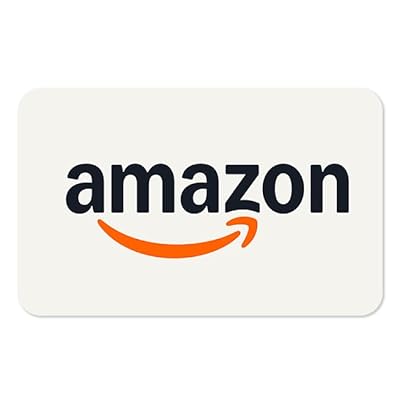
Amazon (NASDAQ:AMZN) Maintains Strong Position Amid Market Fluctuations
- Oppenheimer maintains an "Outperform" rating for Amazon (NASDAQ:AMZN), indicating confidence in its future performance despite a recent price decrease.
- Amazon's third-quarter earnings report shows a 13% after-hours stock price jump, driven by growth in AWS, advertising, and retail sectors.
- The company's market capitalization stands at approximately $2.38 trillion, with a 52-week high of $242.52 and a low of $161.38, highlighting its market influence and volatility.
Amazon (NASDAQ:AMZN) is a global leader in e-commerce and cloud computing. Known for its vast product range and services, Amazon has a strong presence in online retail, digital streaming, and artificial intelligence. Its main competitors include companies like Walmart in retail and Microsoft in cloud services.
On October 31, 2025, Oppenheimer maintained its "Outperform" rating for Amazon, with the stock priced at $222.86. This rating suggests confidence in Amazon's future performance. Despite a recent price decrease of 3.23%, the stock has shown resilience, trading between $222.84 and $228.43 today.
Amazon's third-quarter earnings report revealed a 13% after-hours stock price jump. This surge was driven by growth in Amazon Web Services (AWS), advertising, and retail sectors. The extensive use of artificial intelligence has been a key factor in this growth, exceeding market expectations.
Amazon's market capitalization is approximately $2.38 trillion, reflecting its significant influence in the market. The stock has seen a 52-week high of $242.52 and a low of $161.38, indicating its volatility. Today's trading volume is 93.57 million shares, showing active investor interest.
Despite the current price dip, Amazon's strong performance in key sectors and Oppenheimer's "Outperform" rating suggest potential for future growth. Investors are advised to hold, as the company continues to leverage its strengths in technology and innovation.
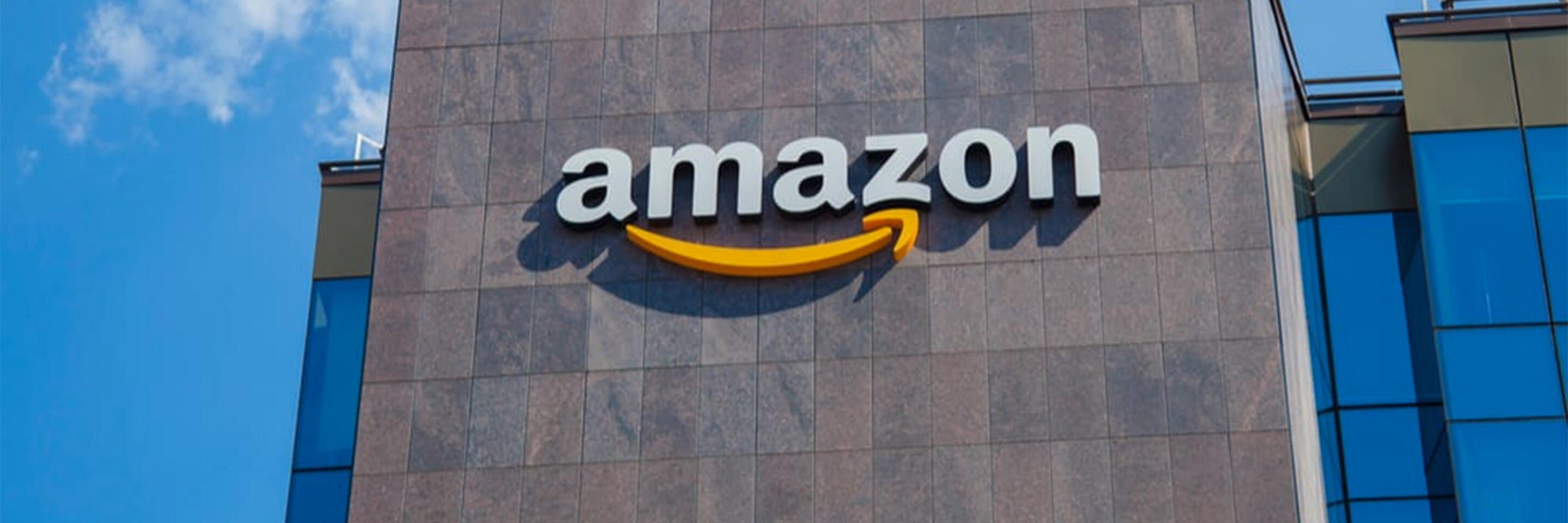
Amazon.com Inc (NASDAQ:AMZN) Stock Performance and Recent Purchase by Marjorie Taylor Greene
- Marjorie Taylor Greene's recent purchase of Amazon.com Inc (NASDAQ:AMZN) shares valued between $1,001 and $15,000.
- Amazon's stock has seen a 4.81% increase over the past five trading sessions.
- The company's market capitalization stands at approximately $2.45 trillion, with a current stock price of $230.13.
Amazon.com Inc (NASDAQ:AMZN) is a global leader in e-commerce and cloud computing services. Founded by Jeff Bezos in 1994, Amazon has grown to become one of the most valuable companies in the world. It competes with other tech giants like Microsoft and Google in the cloud space, and with retailers like Walmart in e-commerce.
On October 24, 2025, Marjorie Taylor Greene made a purchase of Amazon shares, valued between $1,001 and $15,000. This transaction was disclosed on October 29, 2025. Her investment comes at a time when Amazon's stock has been performing well, with a notable increase of 4.81% over the past five trading sessions.
Amazon's stock price currently stands at $230.13, reflecting a 0.38% increase or $0.88. The stock has traded between $227.80 and $232.81 today. Over the past year, it has seen a high of $242.52 and a low of $161.38, indicating significant volatility.
The company's market capitalization is approximately $2.45 trillion, highlighting its massive scale and influence in the market. With a trading volume of 18.2 million shares on the NASDAQ, Amazon remains a highly active and sought-after stock among investors.
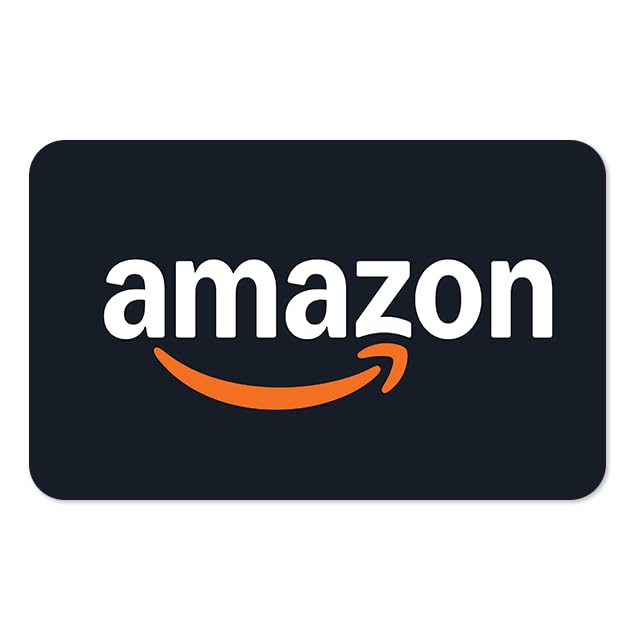
Marjorie Taylor Greene's Investment in Amazon (NASDAQ:AMZN) and Its Implications
- Marjorie Taylor Greene's recent purchase of Amazon.com Inc. (NASDAQ:AMZN) shares highlights the ongoing interest in major tech companies.
- Amazon's AWS experienced a significant outage, emphasizing the critical role of cloud services in global digital infrastructure.
- Amazon is pushing automation in its warehouses with robots like Sparrow, Cardinal, and Proteus, aiming to enhance efficiency and reduce human labor reliance.
On October 15, 2025, Marjorie Taylor Greene engaged in a purchase transaction involving shares of Amazon.com Inc. (NASDAQ:AMZN). The transaction amount ranged between $1,001 and $15,000. Amazon, a global leader in e-commerce and cloud computing, is known for its vast array of services, including Amazon Web Services (AWS), which plays a crucial role in digital infrastructure worldwide.
Recently, AWS experienced a significant outage that disrupted global internet connectivity, affecting operations across thousands of platforms. This incident highlighted the world's heavy reliance on a limited number of cloud providers. AWS has since restored its systems, but the event underscores the critical role Amazon's cloud network plays in global digital infrastructure.
In addition to its cloud services, Amazon is advancing its automation efforts with the introduction of robots named Sparrow, Cardinal, and Proteus. These robots are gradually taking over tasks traditionally performed by human workers in Amazon's warehouses. This move is part of Amazon's broader strategy to enhance efficiency and reduce reliance on human labor in its operations.
Amazon's stock is currently trading at $222.24 on the NASDAQ, reflecting an increase of 2.66% or $5.76. The stock's price today has ranged from a low of $218 to a high of $222.26. Over the past year, Amazon's stock has reached a high of $242.52 and a low of $161.38. The company's market capitalization stands at approximately $2.37 trillion, with a trading volume of 19.64 million shares.
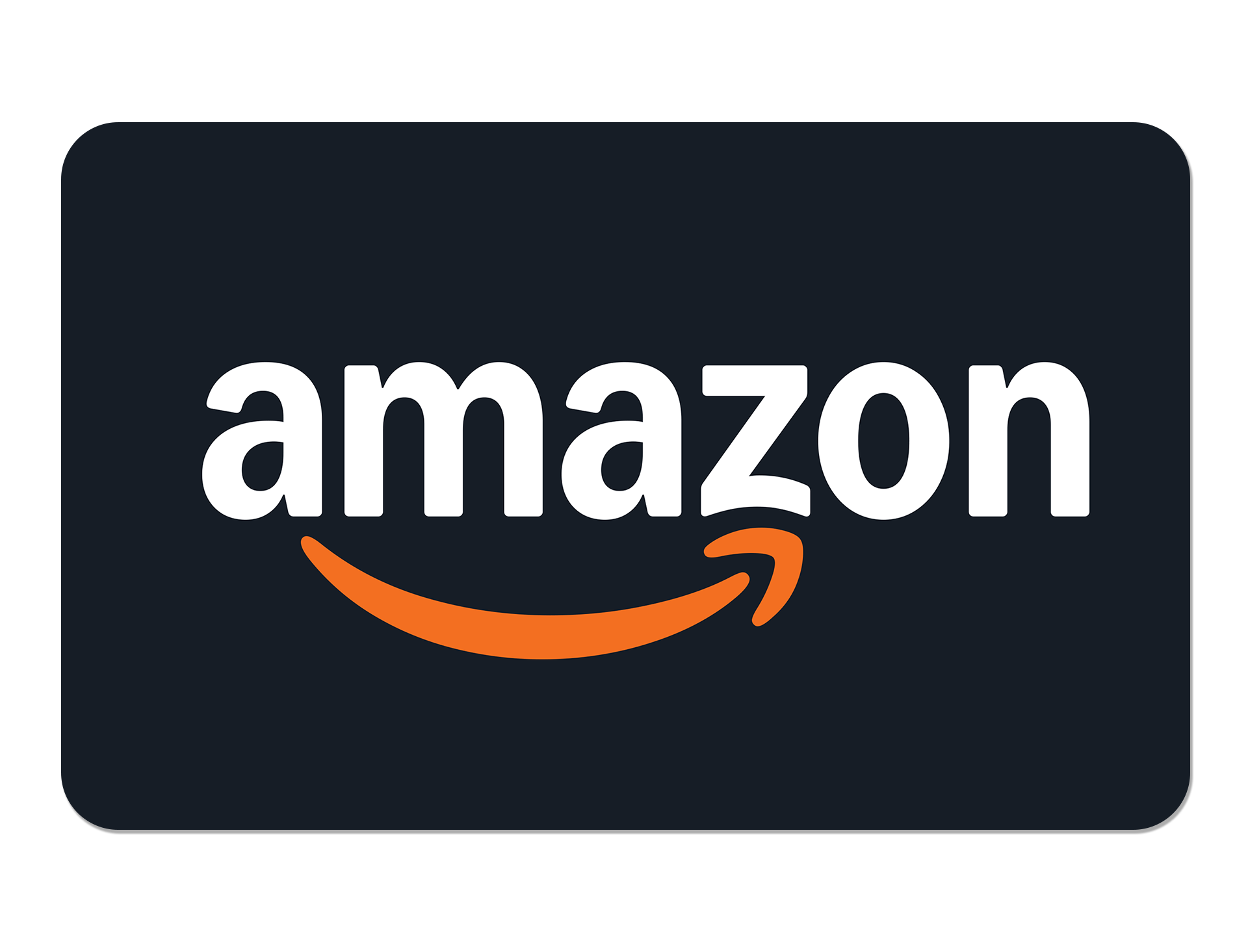
Amazon (NASDAQ:AMZN) Price Target Update and Financial Overview
- Laura Martin from Needham sets a new price target of $265 for Amazon (NASDAQ:AMZN), indicating a potential upside of about 23.4%.
- Despite better-than-expected Q2 results, Amazon's stock price declined, leading analysts to raise their price targets.
- Amazon's retail segment boosts quarterly performance, but AWS shows mixed results, viewed by analysts as a buying opportunity despite recent stock weakness.
On August 1, 2025, Laura Martin from Needham set a price target of $265 for Amazon (NASDAQ:AMZN). At the time, the stock was trading at $214.75, suggesting a potential upside of about 23.4%. Amazon, a leading e-commerce and cloud computing company, competes with giants like Walmart and Microsoft. Despite recent stock fluctuations, analysts remain optimistic about its future.
Amazon recently reported better-than-expected second-quarter results, yet its stock price declined. Analysts responded by raising their price targets and maintaining positive ratings. For instance, Bank of America's Justin Post increased his target from $265 to $272, while RBC Capital's Brad Erickson raised his from $230 to $240. These adjustments reflect confidence in Amazon's long-term potential.
The company's retail segment significantly boosted its quarterly performance. However, Amazon Web Services (AWS) reported mixed results, possibly contributing to the stock's decline. Despite this, analysts view the current stock weakness as a buying opportunity. Gene Munster expressed confusion over the stock's performance, questioning, "I don’t know what’s wrong with it."
Amazon's stock price is currently $214.75, marking an 8.27% decrease with a change of $19.36. Today, the stock fluctuated between $212.80 and $220.44. Over the past year, it reached a high of $242.52 and a low of $151.61. The company's market capitalization is approximately $2.28 trillion, with a trading volume of 118.79 million shares on the NASDAQ.
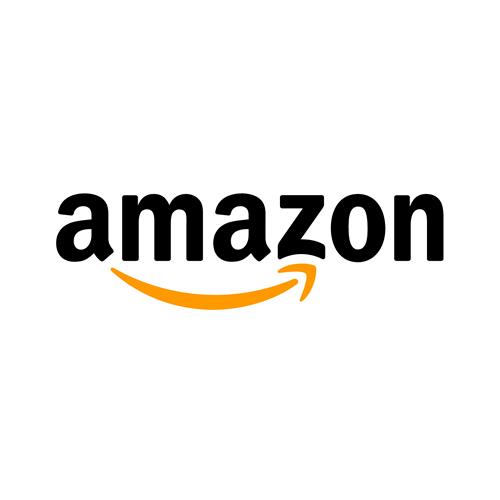
Amazon (NASDAQ:AMZN) Upgraded by Cowen & Co. Amid Cloud Competition
- Cowen & Co. upgraded Amazon to a "Buy" rating, despite recent challenges in the cloud sector and competition from Microsoft and Google.
- Amazon's stock experienced a decline following its quarterly results, primarily due to unmet investor expectations for AWS.
- Analysts from UBS and JPMorgan see the decline as a buying opportunity, with JPMorgan increasing their price target for Amazon.
On August 1, 2025, Cowen & Co. upgraded Amazon (NASDAQ:AMZN) to a "Buy" rating, with the stock priced at $216.23. Amazon, a global e-commerce and cloud computing giant, faces competition from companies like Microsoft and Google, especially in the cloud sector. Despite the upgrade, the action taken was to hold, reflecting cautious optimism.
Amazon's stock recently experienced a decline following its quarterly results, primarily due to unmet investor expectations for Amazon Web Services (AWS). AWS, a key revenue driver, met but did not exceed expectations, contributing to the stock's drop. In contrast, competitors like Microsoft and Google have shown stronger cloud growth, adding pressure on Amazon to enhance its cloud performance.
Despite the decline, several analysts see this as a buying opportunity. UBS analysts advise traders not to be deterred by Amazon's increasing investments in AI infrastructure. This sentiment is echoed by JPMorgan analysts, who suggest investors "buy the pullback" as Amazon's stock fell over 6% in premarket trading. They have increased their price target for Amazon to $265 from $255, indicating a potential 23% upside.
Amazon's stock is currently trading at $216.13, reflecting a decrease of 7.68% with a price drop of $17.98. The stock has fluctuated between a low of $215.09 and a high of $220.44 during the day. Over the past year, Amazon's stock has reached a high of $242.52 and a low of $151.61, showcasing its volatility in the market.
Amazon's market capitalization stands at approximately $2.29 trillion, highlighting its significant presence in the market. Today's trading volume for Amazon is 65.69 million shares, indicating active investor interest. Despite recent challenges, Amazon remains a key player in the e-commerce and cloud computing sectors.
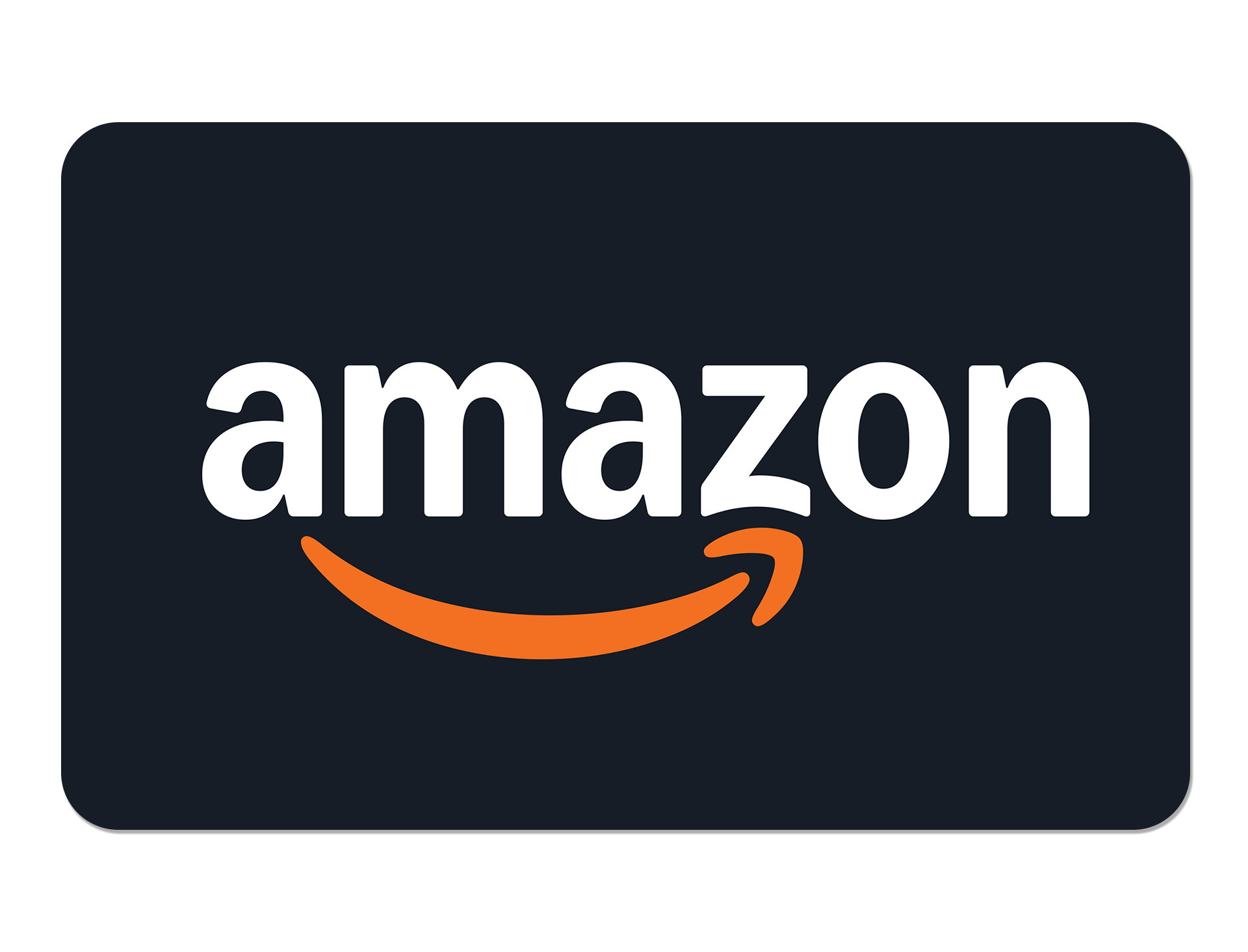
Amazon (NASDAQ:AMZN) Quarterly Earnings Preview
Amazon (NASDAQ:AMZN) is set to release its quarterly earnings on July 31, 2025. Analysts expect an earnings per share (EPS) of $1.31 and revenue of approximately $161.78 billion. Amazon is a global e-commerce and cloud computing giant, competing with companies like Microsoft and Google in the cloud sector. Amazon's second-quarter results will focus on infrastructure investments and its cloud business.
Wall Street is eager to see if investments in artificial intelligence are driving growth. These areas are crucial for Amazon's future, as highlighted by GeekWire. The company's performance in these sectors will be closely watched. Amazon's financial metrics provide insight into its market position. With a price-to-earnings (P/E) ratio of 37.01, investors are willing to pay $37.01 for every dollar of earnings. The price-to-sales ratio of 3.76 reflects the market's valuation of its revenue, while the enterprise value to sales ratio of 3.86 suggests the company's total value relative to its sales. The enterprise value to operating cash flow ratio of 22.04 highlights Amazon's valuation in relation to its cash flow from operations.
An earnings yield of 2.70% offers insight into the return on investment for shareholders. The debt-to-equity ratio of 0.44 indicates a moderate level of debt compared to equity, suggesting a balanced financial structure. Amazon's current ratio of 1.05 suggests it has a slightly higher level of current assets compared to current liabilities. This can be a sign of good short-term financial health, indicating that Amazon is well-positioned to meet its short-term obligations.
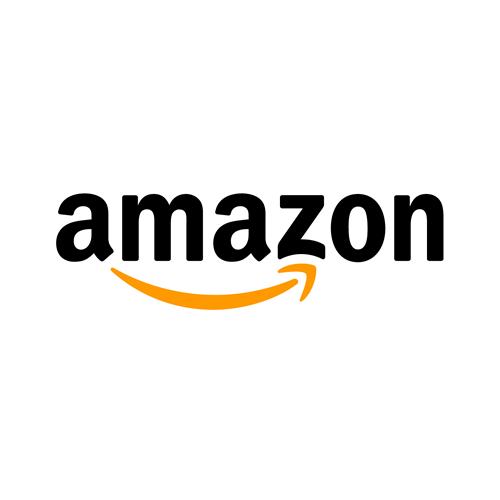
Amazon (NASDAQ:AMZN) Expands "Buy with Prime" Initiative with Dr. Berg Nutritionals
- Amazon's "Buy with Prime" initiative aims to enhance the shopping experience by integrating more brands like Dr. Berg Nutritionals.
- The addition of new brands to the Prime ecosystem is expected to drive growth and customer loyalty for Amazon.
- Despite a significant stock sale by Jeffrey P. Bezos, Amazon's market position remains strong with a current stock price of $222.66 and a market capitalization of approximately $2.36 trillion.
Amazon (NASDAQ:AMZN) is a global leader in e-commerce, cloud computing, and digital streaming. The company is known for its vast online marketplace and its Prime membership program, which offers benefits like free shipping and exclusive deals. Amazon competes with other major retailers like Walmart and Alibaba. The "Buy with Prime" initiative is a strategic move to integrate more brands, such as Dr. Berg Nutritionals, into its ecosystem, enhancing the shopping experience for Prime members.
The addition of Dr. Berg Nutritionals to the "Buy with Prime" initiative is expected to provide Prime members with more options and convenience. This aligns with Amazon's strategy to leverage its Prime membership to drive growth and customer loyalty. By expanding its brand offerings, Amazon aims to solidify its position in the online retail market, offering a wider range of products to its customers.
Despite a recent stock sale by Jeffrey P. Bezos, Amazon's Executive Chair, the company remains strong in the market. On July 7, 2025, Bezos sold 2,046,582 shares at approximately $223.92 each. This transaction did not significantly impact his holdings, as he still owns 902,480,530 shares. The sale reflects Bezos's continued involvement and confidence in Amazon's future.
Amazon's stock price is currently $222.66, showing a slight increase of 0.12, or approximately 0.054%. The stock has fluctuated between $219.70 and $222.79 during the trading day. Over the past year, Amazon's stock has seen a high of $242.52 and a low of $151.61, indicating its resilience in the market. The company's market capitalization stands at approximately $2.36 trillion, highlighting its significant presence in the industry.
Today's trading volume for Amazon is 19,736,405 shares, demonstrating active investor interest. The company's ability to maintain a strong market position, despite fluctuations, is a testament to its robust business model and strategic initiatives like "Buy with Prime." As Amazon continues to expand its brand offerings, it is well-positioned to enhance customer loyalty and drive future growth.







